Paul O’Shea at MPC LA describes working inside the world of Black 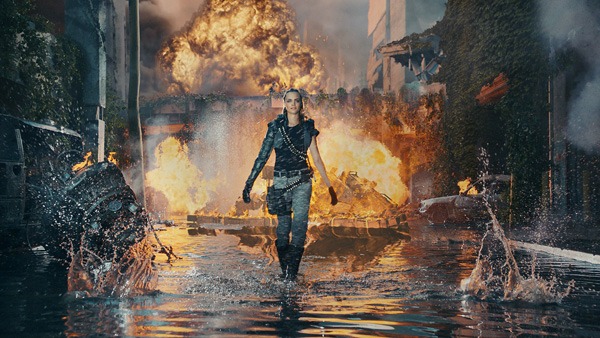
Ops for the game’s new trailer, scouting elaborate sets, handling
photoreal zombies and robots and choreographing FX.
MPC LA Seizes Glory for ‘Call of Duty: Black Ops 3’ Trailer |
| Only a few days ahead of the 6 November release of Call of Duty: Black Ops III, Activision Publishing launched its creative and marketing campaign with a new live-action trailer titled ‘Seize Glory’. |
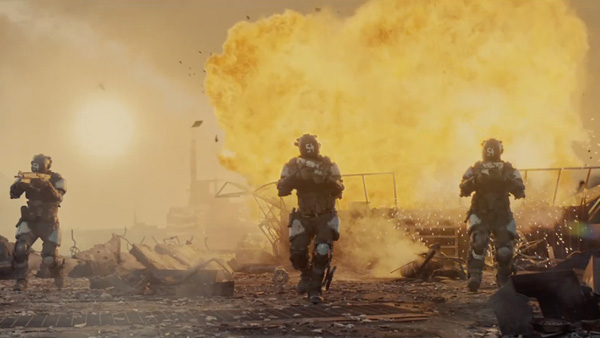 |
|
On-Set Data for PostThe film was shot over five days in an abandoned mall in Southern California, where the natural decay and destruction gave the shoot a more authentic feel. “On set we pushed to increase the speed and efficiency with which we gather survey and location data,” said the team’s creative director Paul O’Shea. “Our VFX supervisor Zach Tucker brought a lot of feature film experience to the shoot, and his own passion for developing opportunities on-set that will support and improve the work in post. We aim to make the smallest footprint possible for production, but generate fast, thorough, focused data for post. “By the time we received an edit, through the use of image-based modelling and existing databases we would have recreated environments and built out lighting scenes, and when the plates were cleared to go online, CG renders were ready to drop in.” |
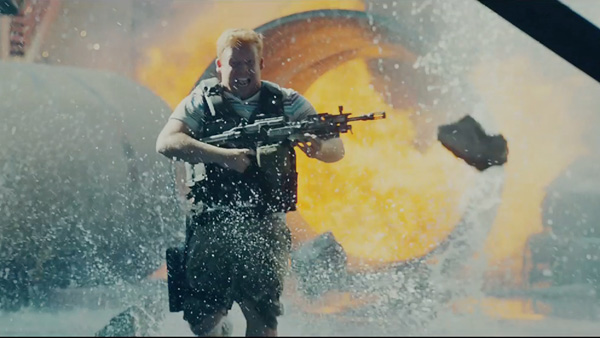 |
|
The Gaming ExperienceMPC LA started working with the director Wayne McClammy intensely in 2014 about 18 months ahead of the game’s November 2015 release. Paul talked through the development and creation in detail with Digital Media World. The project required extensive work on set, which ultimately shortened the post production stage and made it more efficient, and improved the quality of the final result. “Over that time, all of us developed a good, mutual understanding. In the prep stage this meant our concept and look development was well focused. Having made the previous year's Call of Duty spot, ‘Discover Your Power’, also helped us understand the game assets, what is and is not useful and how best to approach the developers for assets and reference. |
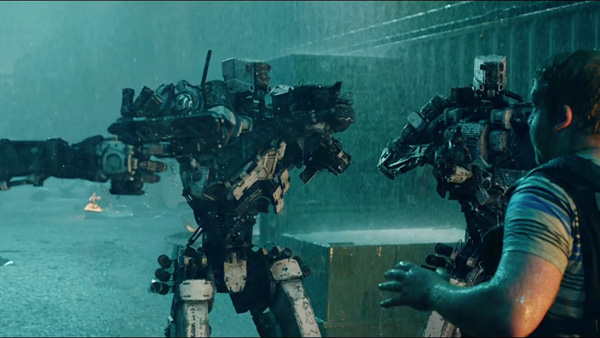 |
|
Laying the FoundationDuring the tech scout, they were able to survey the locations and model them in a very basic manner from stills. A simple LIDAR scan accurately registered and gave scale to these scenes, tying the practical and virtual sets together. Paul said, “We used Agisoft to derive the models and this laid the foundation for lighting schemes, orienting the HDRI sets and any art department models made in SketchUp. A survey of the locations - which were fairly authentic before set dressing - included a texture shoot where we cancelled out lighting direction or ambient colour bias, making sure the photography was useful with minimal post processing.” On set, Paul’s team of just two to five people aimed to form as focused but unobtrusive a unit as possible. By working with the crew beforehand, they developed a kind of shorthand and level of trust reassuring everyone that what they were asking for was needed for the best result. |
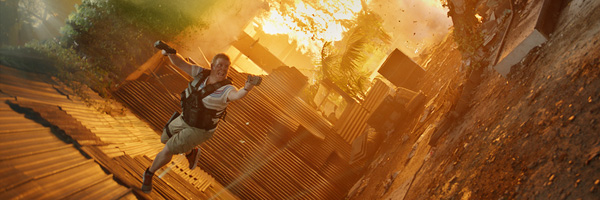 |
|
Lens data, camera placement and compositions were all authentic. The cinematographer Dion Beebe brought his experience from shooting ‘Edge of Tomorrow’ to the process, which was an important reference for MPC’s artists. He was involved throughout and attended grading sessions working with the colourist Ricky Gausis to balance the scenes and create coherent but distinctive looks for each vignette. PrevisualisationBy working this way, they were able to produce concept work early enough to provide content for the preproduction book and useful context for the shoot. “This helps reassure the clients and allows them to visualize things during shooting that they cannot see,” Paul said. “We could rig and adapt the game assets to provide blocking for the edit, but on set we preferred to use stunt men in mocap suits as proxies for the robots. This gave Wayne and Dion Beebe something tangible to frame up on and track. |
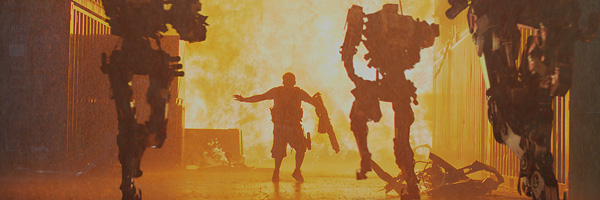 |
|
They had roughly ten days to work on the previs with a team of four to eight at one time. The entire spot was rendered and iterations presented both at preproduction and during the shoot. Apart from giving the director and agency a chance to explore and discount options, it also gave Activision a means of joining in with and understanding the process. “It was evolving fast and was based on conversations, trust and an intangible understanding between different departments. The previz helped communicate spatial relationships as well - the director and DP would review it to short cut some of the lensing and spatial experimenting," Paul said. Scene BuildingOnce they got stuck into the modelling, the up-rezing of game assets was in fact not entirely straightforward. In most cases, they had to start models from scratch to ensure subtleties of edges and detail that bring the objects to a photoreal standard, but the game assets gave them a good template. The environments were built from scratch with much of the set dressing, like the tower and antennae. |
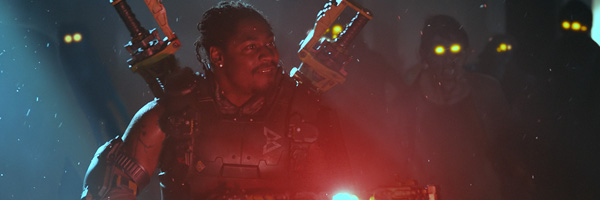 |
|
“We used practical lights to create interactive light effects where we knew explosions would be, in the bio dome and shipping container sequence, for instance,” said Paul. “In the Zombie scene, we used strobe lights and LED sets on the end of the pistols to create light and then replaced them with muzzle flares. The end scene had numerous practical explosions, but we ultimately replaced the water and so had to reconstitute the reflections and light by re-projecting the plate and simulating fire and other lights in CG.” |
 |
|
Heroic FX“Explosions are critical to this story, and special effects supervisor Dave Peterson provided a great practical base for each scene. We were determined from the start that his work would be a real star in the piece. Missiles were guided along wires and huge explosions set off to make this spot feel authentic. Dave and our team have worked together many times now and have a good understanding of where he leaves off and we take over. We shot close to one of the city airports and after the first couple of days, this affected how big the pyro could be. We adjusted the balance a bit here and there but when the pivotal, high drama scenes happen, Dave let everything on the truck go – it was epic.” |
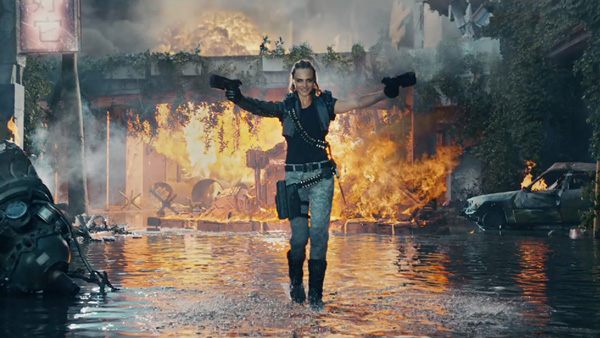 |
|
“Because this was such a complex effect, it only came together in the last two to three days. It's a mixture of Houdini simulations and careful Flame work with our library elements. The dressing of the splashes on the lens provided a bit of misdirection to help the realism. We played with different levels of electricity in the water from the gravity spikes - the signature Black Ops weapon - but finally the water looked sufficiently real that it was better to knock that part of the effect right back. Timing Kevin's exit and the wave required some detailed adjustment in the Flame until the shots worked.” www.moving-picture.com |


















